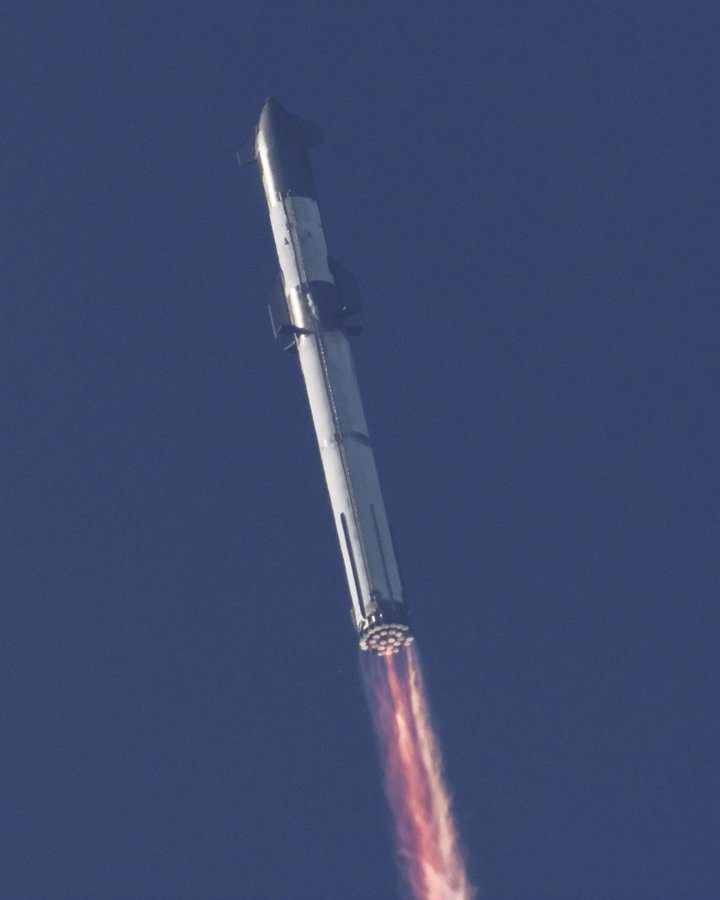SpaceX is making a number of modifications to its SuperHeavy/Starship combination and to the launch pad ahead of its next flight, following its pre-staging maiden launch failure due to attitude control and engine loss issues. Elon Musk, founder, CEO and Chief Technical Officer of SpaceX, laid bare some of the adjustments in an interview with Bloomberg journalist Ashlee Vance.

Starship/SuperHeavy makes a smooth supersonic climb on its maiden flight, but it went wrong later. Courtesy: Elon Musk/Twitter
The new changes include:
- Moving to a “hot staging” stage separation, whereby the Starship second stage engines are ignited before the first stage has separated. An extension on top of the first stage, with an exhaust venting system along with thermal protection, has been introduced to enable this without compromising the integrity of the reusable Super Heavy first stage. These changes will, SpaceX hopes, increase the reusable configuration’s 100 metric ton payload to low Earth orbit by up to ten per cent.
- A new injection manifold design with improved bolts to reduce methane-rich gas leaks on the Raptor engines before they mix with oxygen-rich gas in the combustion chamber.
- Vector control will be electric powered rather than hydraulic (an alteration previously announced).
- More armouring between the 33 first-stage Raptor engines to stop a cascading effect whereby one explosive engine failure knocks out several others.
- The launch pad will use a combination of two armour plates above a new steel-reinforced concrete base to reduce erosion and debris, which were evident on the first flight. The pad will also have a proper water cooling/vibration suppression system in between the plates, with water being vented/sprayed upwards from the pad itself. “Think of it like a gigantic upside-down shower head,” is how Musk explained the modification.
- Finally, the rocket will lift off from the pad in a much shorter time.
What do the changes mean?
Although Musk outlined a number of revisions, there was no information about whether the explosive Flight Termination System, which was heavily criticised for not working fast enough when the rocket assembly started to spin, would be improved.
The next launch attempt of the Super Heavy/Starship combination is expected in late summer. Musk was optimistic about the chances of success for the second flight attempt: “I think the probability of this next flight working, getting to orbit, is much higher than the last one. Maybe it’s like 60%,” he said.








